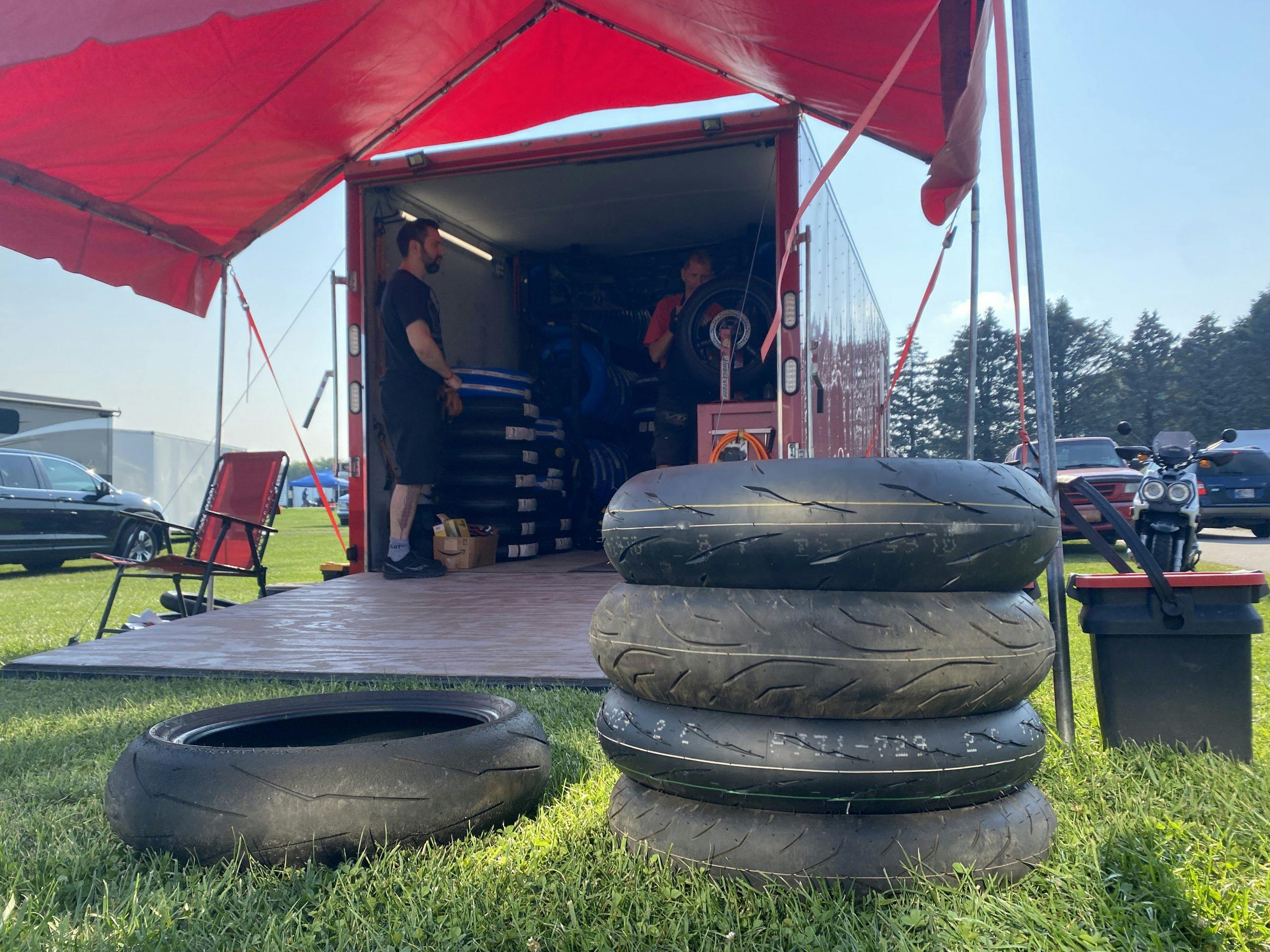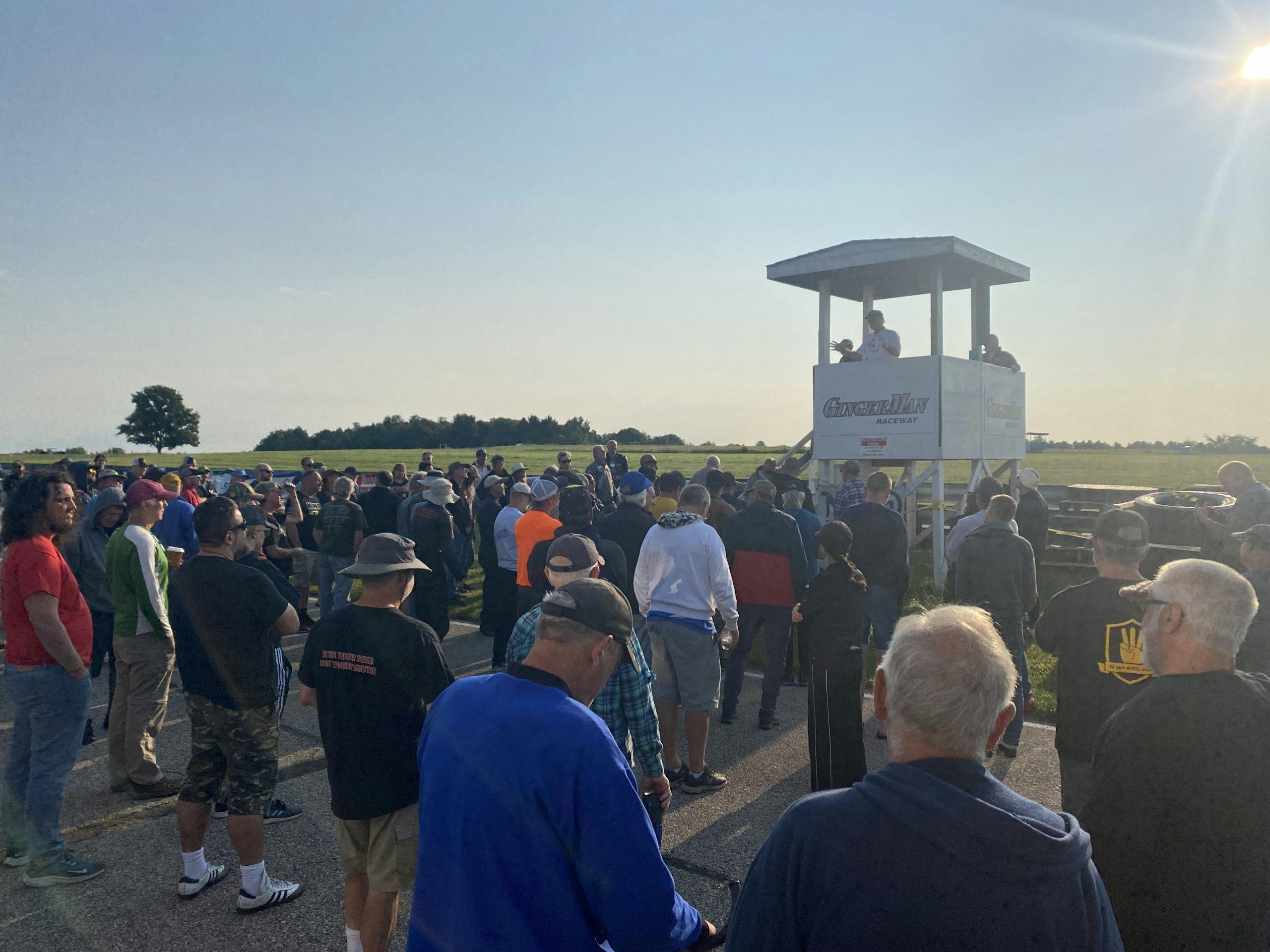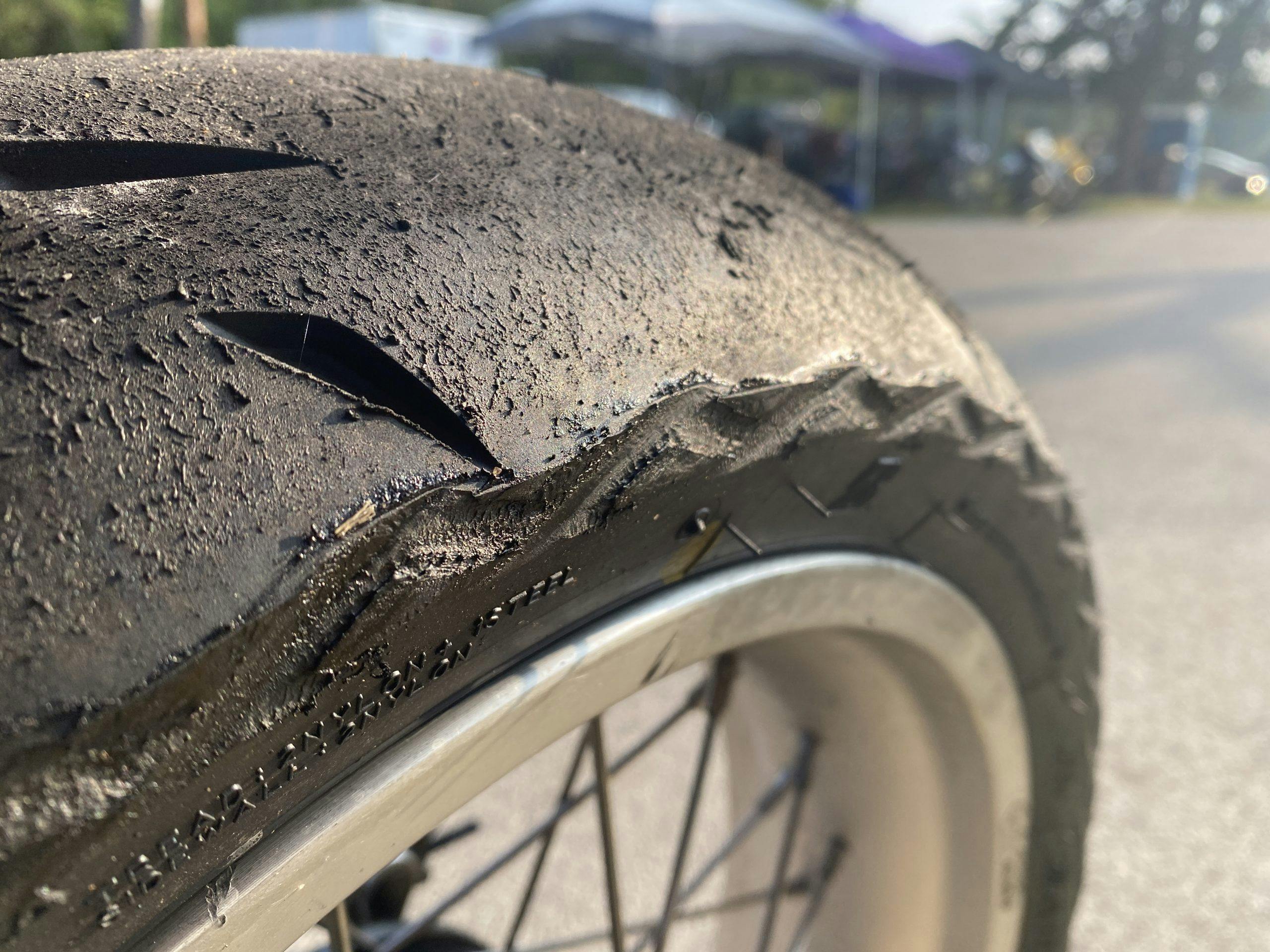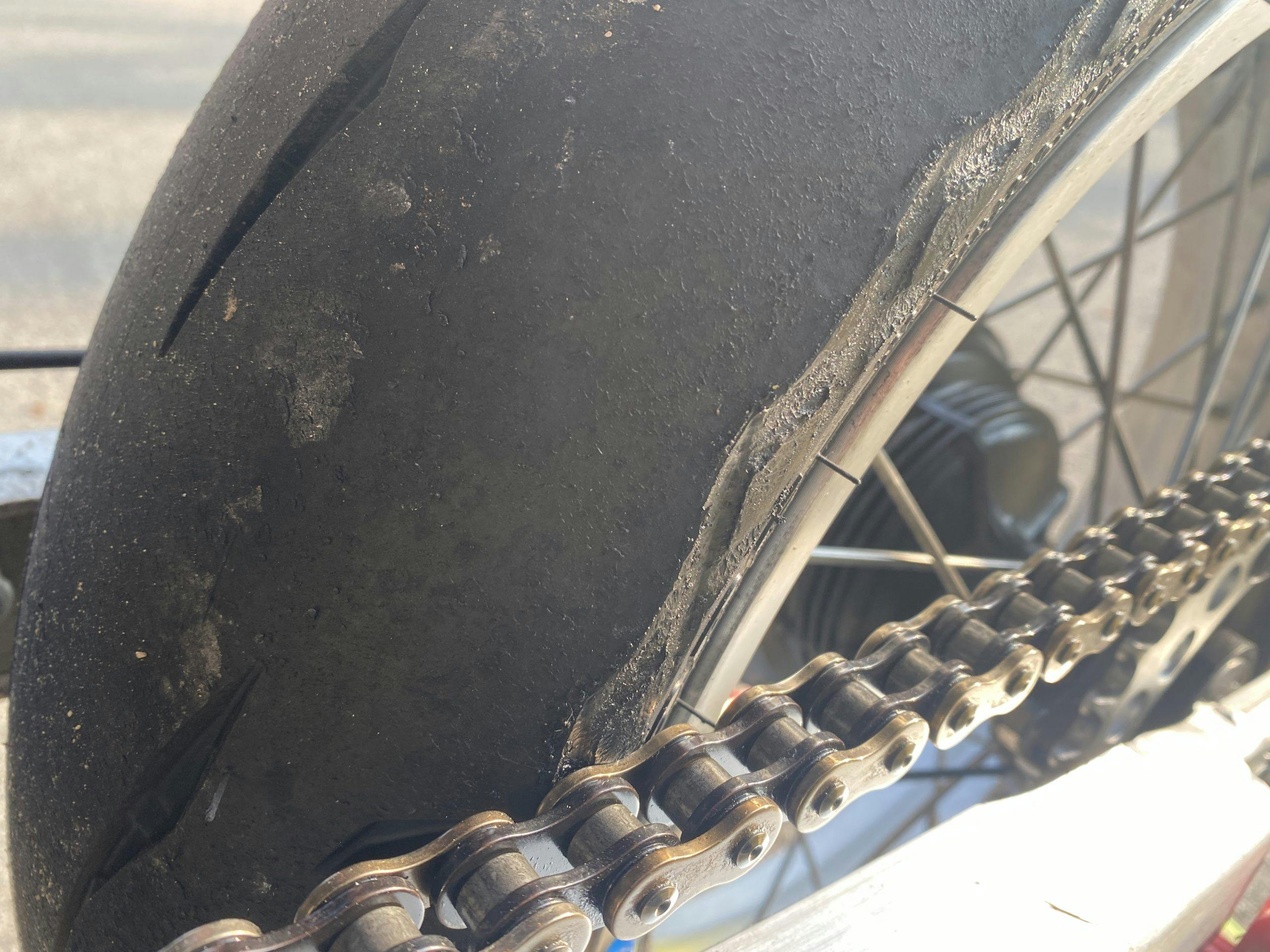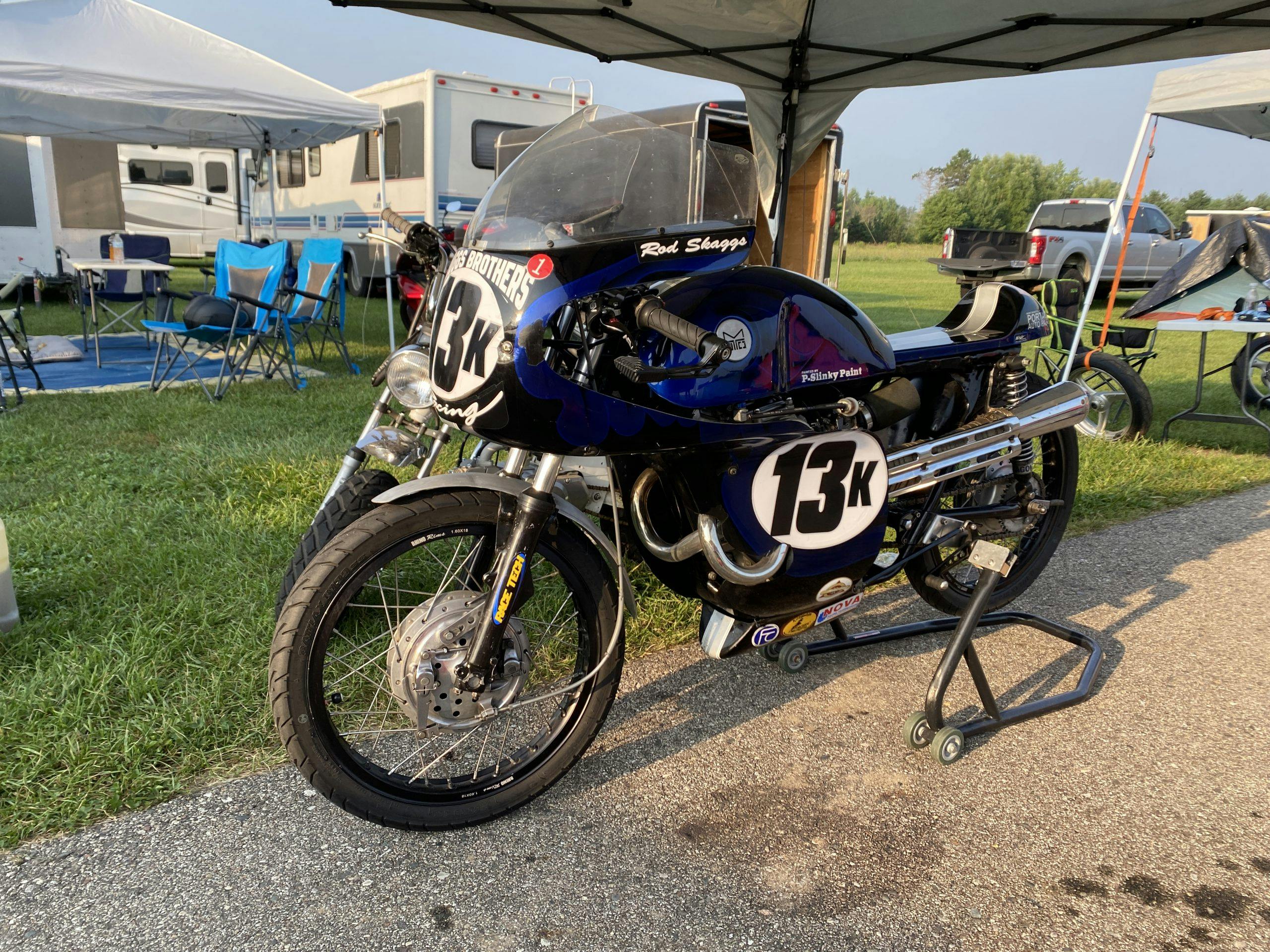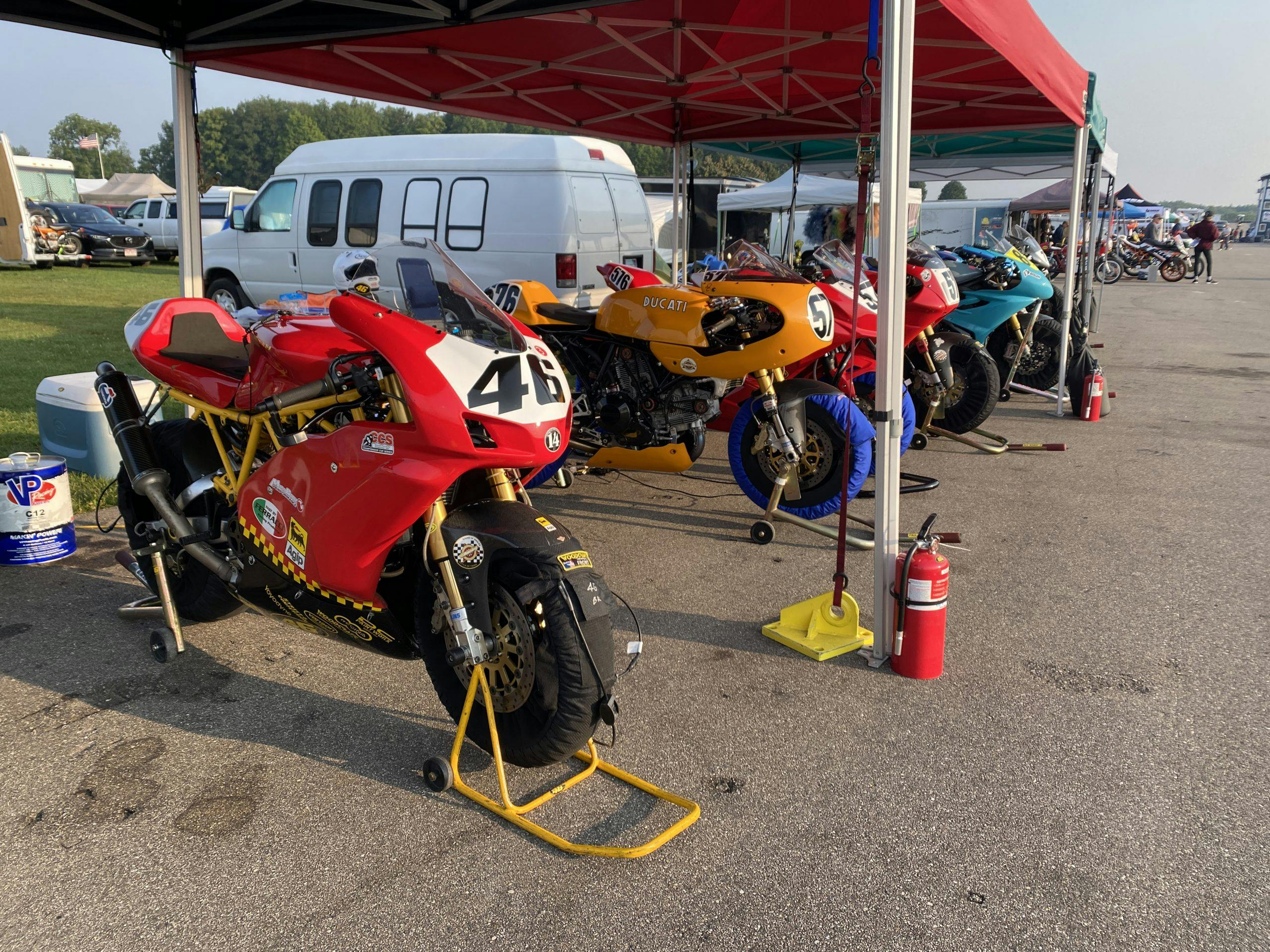Six Ways to Sunday: Is that the black flag?
With two of the six motorcycle racing disciplines crossed off my list, it was time to take my XR250R out for its third flavor of racing. After some late garage nights, and a even a test session for my safety gear, I packed up the red Express van and pointed south to Michigan’s GingerMan Raceway for a bout of road racing. Before I could go twist the throttle bar to bar with the other motards, as the French say, I had to go to class.
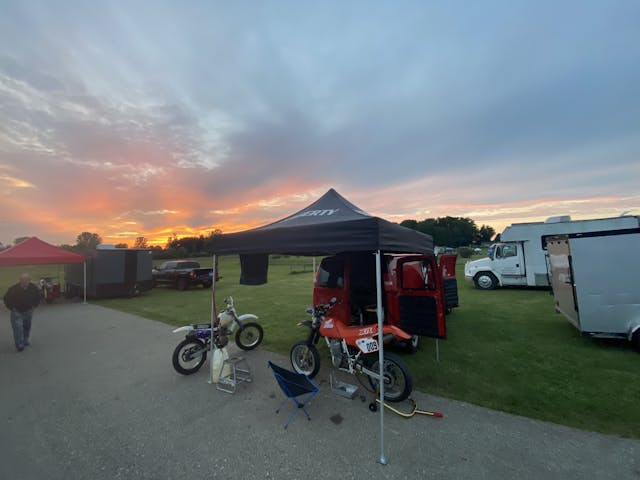
The stack of colorful cloth, draped over the beige metal folding chair during the safety briefing, was a mix of colors I recognized and several that had me genuinely curious. Luckily, that was the first lesson of the day, so details stuck in my brain. On the unlucky side, it would be a preview of how my day ultimately ended.
The American Historic Motorcycle Racing Association (AHMRA) is a welcoming group, but as with anything as risky as roadracing, it wants to make sure folks are up to speed on safety before getting on track. You can be slow when it comes to lap times, but you better know how to handle being passed (and how to behave in general) on track. That is what the AHRMA Academy of Roadracing does; anyone who wants to participate with AHRMA must take this course, which typically spans the Friday practice day before a race weekend. Pass, and you are cleared to race not only the following two days, but also any future events.
As a total newbie, I was a little nervous to sit down in the classroom with our instructor Mark Morrow and the six other potential racers, each of whom brought a different type of race machine. Nearly everyone else clearly had at least some track-day experience, if not race time with other organizations. None of that mattered. Following introductions, we all squirmed into our leathers and headed out onto the track for our first session of practice. The goal was to learn the racing line at what was more or less a parade pace. Three times around, park the bikes, back to the classroom.
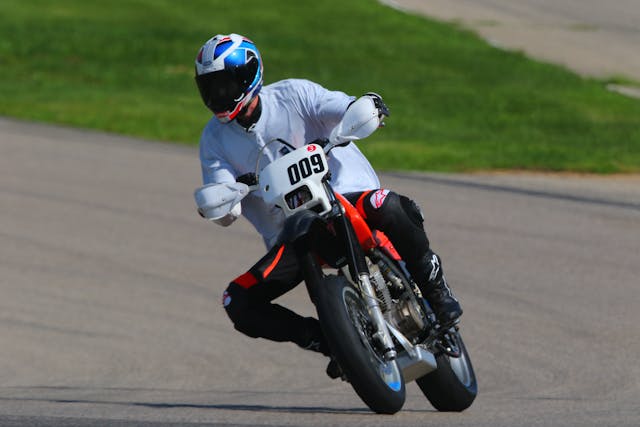
Next came the aforementioned vibrant pieces of cloth, many of which we hoped to never see. We learned about the meaning of each flag and how it is displayed by corner workers. There would be a test at the end of the day, and if you miss one of flags it is considered an automatic failure. Two important ones stuck in my brain: black flag waved and then pointed at me meant bike problem and I should get off track as quickly as safely possible. Rocking yellow and red meant fluid on the race surface. The thought alone of either of these strikes fear in the heart of any motorcycle racer.
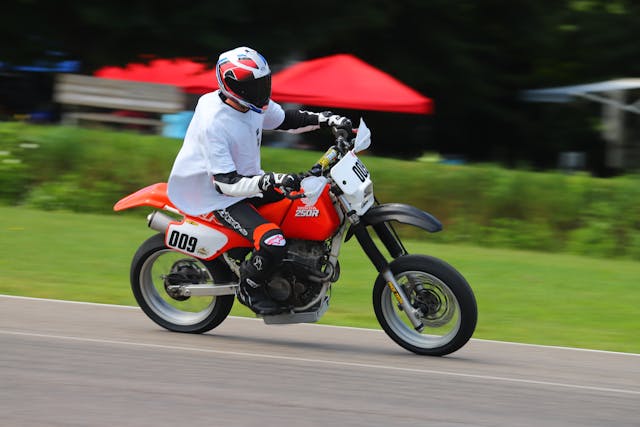
The day alternated between classroom and track sessions. Each session allowed us to dial in more throttle, more speed, more lean angle. In the classroom we talk about best practices and how to conduct ourselves as new racers. We were each given a 3XL T-shirt, and it is mandated that we wear it over our leathers to signal to others we might not know what we are doing. Veterans know to proceed with a little extra caution around 3XLs. I knew I was totally outgunned on my XR250 among a field of modern performance 450cc machines, so to say I felt personally attacked by this practice would be accurate.
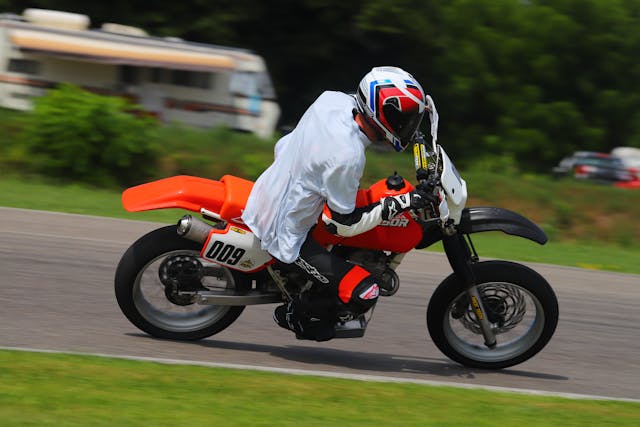
The third session on track was, in hindsight, a warning. Every time we pulled off track there were two people standing at the end of the pit-in. Each bike would pull up to one of them and they would give the bike a quick visual inspection to ensure there were no errant fluids, bolts, flapping bodywork, or other items would need attention before the bike could go back on track. It feels procedural: stop, nod, they walk around the back on the bike, pat you on the back while also giving a thumbs-up right in front of your visor.
Exiting that third session went a little differently than the prior outings. It started with that same stop, nod, walk around the bike, wait for the pat on the back and the thumbs-up. Then, more waiting. Why am I still waiting? A kind face popped up right in my view. She was yelling something, but I was surrounded by racing machines, crammed into my helmet, and wearing earplugs, so I couldn’t hear her. She pointed at the left side of the XR’s swingarm, just behind my left foot. There was a mess of rubber stuck there. Didn’t need to be a psychic or lip reader to determine that she wanted it cleaned up and investigated.
To be honest, I mostly shrugged it off at first. A pile of rubber there made sense, because just the night before I had a fresh set of race tires mounted on the 17-inch rims I laced months ago. The tires mounted in my own garage were merely rollers to allow me to get the bike in and out of the van, and also so I could do a few neighborhood laps to shake down the chassis before going wide open at the track. The XR250R swingarm was designed with a narrow, but tall, off-road tire in mind. The tire I stuffed inside there is a 150-mm-wide chunk of bubblegum rubber that was going to have to self-clearance on the chain side. This practice is common on supermotos, since the conversion process involves making some pretty serious alterations. In talking with the tire guy who sold and installed my Bridgestone R11 treads at the track, this chewed-up edge is very common and nothing to be overly concerned with. The previous supermotos I have built had this same “issue” and nothing really concerning ever materialized from it.
So, with a rag, I wiped away the collected rubber before bolting back to the classroom. But the rag showed me a secret: there was something binding the tiny tire chunks together. I thought it was a bit of oil that was being flung from the brand new o-ring chain, maybe combined with a small amount of oil being pulled from the rubber of the tire by the hot chain.
It was much worse than that. I went back out on track without concern for what was truly happening aside my left ankle. When I finally pulled off, I parked the bike next to the classroom and walked inside. Mark, the instructor, did a double take while walking by it and circled back around for further investigation.

Oil. There was oil in my beloved baking pan. There was also oil on the case, just below the front sprocket. Not a lot, but the correct amount is none. Safety first: I was benched until I could diagnose and resolve the problem. No argument there.
The class went out for the fourth and final practice session before the mock race that would cap off our training. This meant I had roughly 15 minutes to fix the XR and get out into the hot pits to grid up for the mock race. I grabbed the 8- and 10mm sockets from my toolkit and stripped off the guard and sprocket. That’s when it hit me: I had this exact task on my to-do list following the Heartland Park mudfest race, because I knew the space between the sprocket and countershaft seal was likely full of junk. Somehow that got crossed off my to-do list without actually being done.

The bird’s nest I pulled out from behind that sprocket was embarrassing. A mess of long grass, mud, and small twigs had spun themselves around the countershaft. I used a pick to remove everything I could and dislodge anything caught inside the double-lipped seal. Little did I know that nest was acting as a diaper of sorts (good), but was also being spun around and damaged the seal with each revolution (bad). I cleaned things up, reassembled, crossed my fingers, and started the bike. No oil. Clean. I headed for the hot pits and out onto track, thinking I was in the clear.
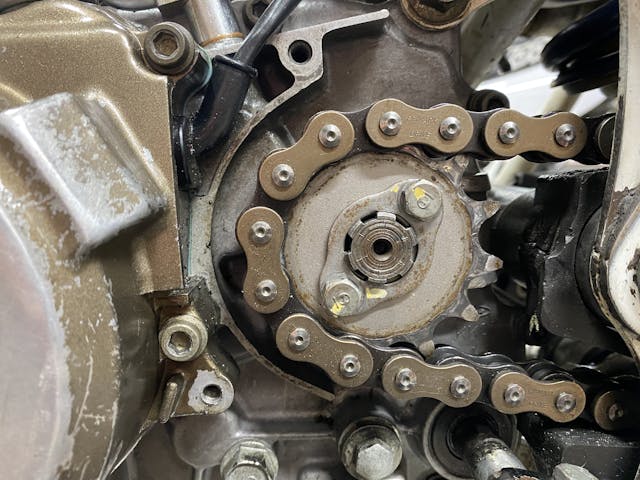
This minor surgery was completed in just enough time that I managed to run one quick lap before were were set to grid up for the mock race. As I pulled into the hot pits, I got the habitual look over, followed by a deeply concerned look. The pat on the back still came, but somebody knew better than to let me out just yet. Mark pulled up next to me on his Ninja 400 and stared down with his experienced eyes before looking me straight into mine and shaking his head. “That is just too much oil. I don’t like it and I don’t think it’s safe. Go ahead and pit now. You can still pass the class if you pass the written test, but you aren’t going back on track until that is truly fixed.” Disappointing, but fair.
I parked the bike and peeled off my gear before walking back to the classroom to wait for everyone else to finish the track session and join me for the written test. What hurt now was being forced to sit and stew in my own lack of preparation and how it was setting me up for a late night of working at best, or a wasted weekend at worst. When everyone returned we all took our exams—not a failure in the bunch. Smiles all around as we collectively prepared to race in our respective classes the following days.
On the walk back to my pit, it hit me I would not be racing that weekend after all. Though I did have a spare countershaft seal, it was sitting on my workbench at home—a three-hour drive north. That’s not even considering the fact that the countershaft seal is pressed into place from the inside of the engine case and had metal lips on it to prevent removal from the outside. This was not the kind of repair I could perform in the pits. The engine was going to have to come out of the chassis and be torn all the way down to split the case. An engine that has only run 7.5 hours, and was now in need of a complete teardown. Wonderful. In the meantime I got to walk the pits and just enjoy spectating a race. I’m not about to waste a weekend at the racetrack.
While I didn’t physically have the black flag pointed at me, I effectively black-flagged myself. The machine was not safe anymore. That decision wasn’t so hard, but determining what flag I wave at myself next is proving a lot tougher. Do I wave checkers on this project and just call it done? Do I wave white and surrender on roadracing just so I can return to dirt disciplines, where I can leak all the oil I want without much repercussion?
No. I’m rolling up my sleeves, getting out the tools, and tearing the engine down. GingerMan was the closest road race event to home, but not the only one within driving distance. Next weekend the whole AHRMA crew is headed to South Beloit, Illinois for another event. That means I have Monday and Tuesday to teardown and rebuild my engine, Wednesday to pack and refresh my gear, and Thursday morning to leave bright and early for a 7-plus-hour drive to Blackhawk Farms Raceway.
I knew that when I set out for my Six Ways to Sunday adventure, not all of those ways would be easy. Giving up is not an option.

